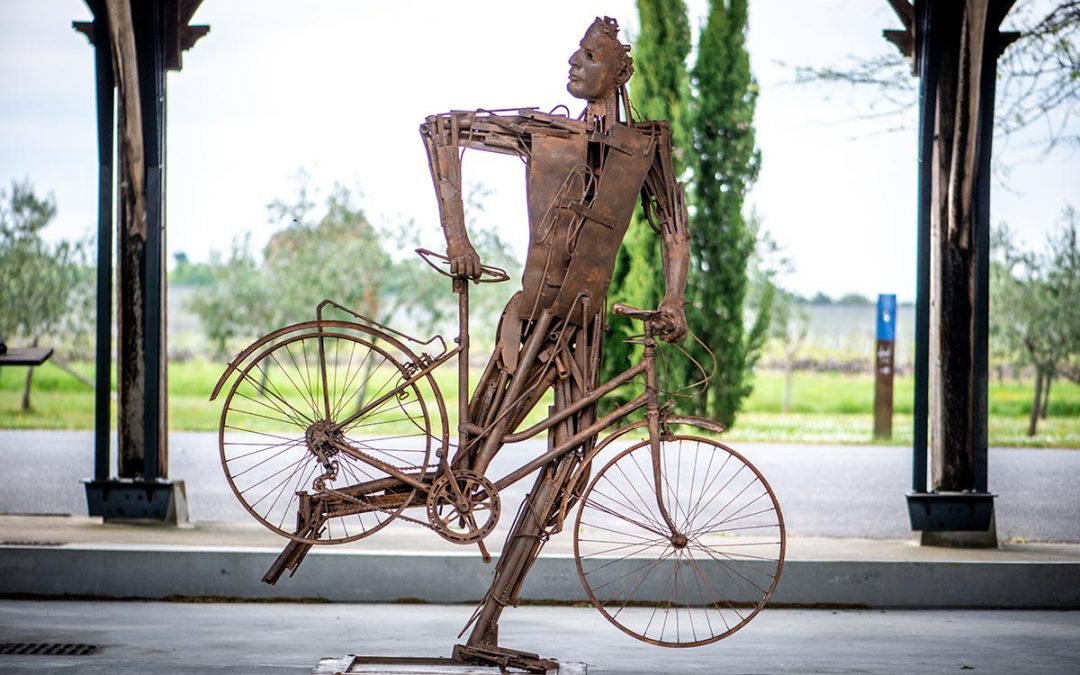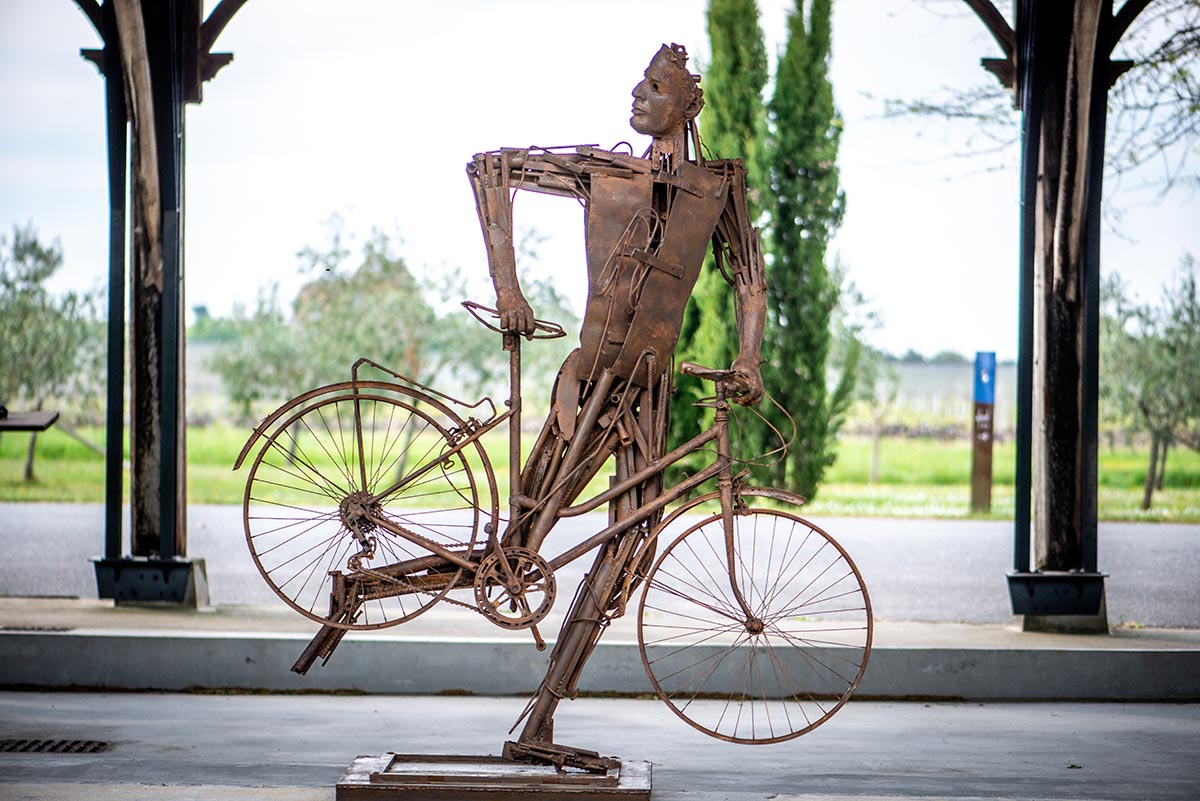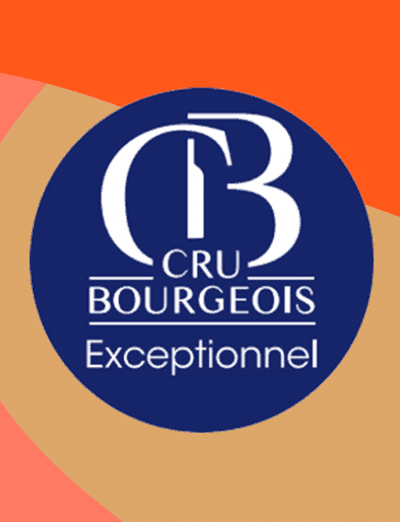
EBABX Partnership





Arsac, April 2020 – The Bordeaux wine routes reveal a rich heritage, which has always combined tradition and innovation.
While Château d’Arsac is one of the oldest estates in the Médoc and boasts a near-1,000 year-old turbulent history, it is nevertheless home to a remarkable modern art collection, inspired by the genuine passion of estate owner, Philippe Raoux.
A classified growth in the Margaux and Haut-Médoc appellations, Château d’Arsac is also open to artistic creation. Every year since 1992, the estate has acquired an artwork signed by a major contemporary artist, including Bernard Pagès, Claude Viallat, Bernar Venet, Pierre Buraglio, Jean-Michel Folon, Niki de Saint Phalle, Mark di Suvero and César, to name a few.
This year, Philippe Raoux will expand his collection with “Le Voleur de Bicyclette” (The Bicycle Thief), created by artist and founder Romain Barelier. This sculpture will welcome visitors to the estate and mark the start of a surprising walking trail through the Sculpture Garden. The Philippe Raoux collection in Arsac is the largest private contemporary sculpture collection in Southwest France. The 31 emblematic, and often monumental, artworks are installed in the Château grounds, and open to visitors by appointment.
“Le Voleur de Bicyclette” can be traced back to 2002, when Romain Barelier was surprised to see so many objects piled up at the bottom of the dried-up Canal Saint-Martin. He picked up a bicycle, perhaps stolen from its owner, and decided to associate it with a character made out of scrap metal: not the cyclist but rather the bicycle thief. Born in Rome and a keen Italian film enthusiast, Romain Barelier drew a parallel between his creation and a film by Vittorio de Sica: Bicycle Thieves. This charming story captivated Philippe Raoux and convinced him to add this artwork to his collection, thus offering a prestigious end of the race for this little bike.
When discovering Château d’Arsac, visitors immerse themselves in a world where history, art, and winemaking intertwine. They may book either directly at the estate (by phone or online at www.chateau-arsac.com), or opt for a one-hour tour in partnership with the Bordeaux Tourist Office, which includes a visit to the Blue Cellar and Sculpture Garden, as well as a tasting of three wines. Available in French and English, the guided tour also offers visitors an overview of the history of the estate and how its wines are made, as well as the stories behind the artworks dotted around the vineyards.


The new Crus Bourgeois du Médoc classification was published on 2 January 2020.
This official classification – valid for 5 years – recognises the quality of wines produced at châteaux in the Médoc. In each of the eight Médoc appellations*, only one château has been ranked as “exceptional” by an independent jury.
Château d’Arsac received this ultimate accolade 34 years after Philippe Raoux, a young wine merchant at the time, decided to embark on a great adventure and bring the abandoned estate back to life. In 1986 – the date of its acquisition – Arsac was quite literally in ruins, and home to nothing more than a few forlorn vines and industrial chicken coops. The château nevertheless boasted a rich history: this vast, ancient 12th century property belonged to Thomas de Montaigne, among others, housed famous French writer Étienne de La Boétie, and stood as a majestic gateway to the Médoc vineyards for centuries. Then came the crises, the bad years, the owners who did not care much for the estate and its eventual abandonment and decay.

At the age of 30, Philippe Raoux enthusiastically set out to awaken the sleeping beauty, with an innovative ambition to erect not a museum, but the epitome of creativity, youth, and modernity. In his own words: “to invent the château of the 20th century“.
When you see the outstanding estate today, combining ancient buildings and modern materials (glazed tiles, steel, and weathering steel), a sculpture garden home to monumental artworks designed by the greatest artists of our time – Niki de Saint Phalle, Bernar Venet, Jean-Michel Folon, Marc di Suvero, Arne Quinze, etc. – and the 110 hectares of vines including 55 reclassified in the Margaux appellation in 1995 (the only example in France of a vineyard changing appellation ), it is hard to imagine that this area used to be a desolate wasteland only three decades ago.
Beyond its clearly visible central tower, which lights up the night sky like another lighthouse in the Médoc, Chateau d’Arsac stands out in other, less obvious ways. The Sculpture Garden is freely open to the public with tours organised all year round. The estate team regularly welcomes local schoolchildren, to share their passion for viticulture and winemaking.
Since 2013, the use of plant protection products has been avoided in the vineyards. The estate has also adopted a sustainable agriculture charter and an independent body guarantees the absence of pesticide residue in the wine. In its quest for environmental excellence, Château d’Arsac has obtained ISO14001 and HVE3 certification (the highest environmental standard). The estate’s team works tirelessly to maintain ecosystems (revegetating ditches, late mowing, etc.) and enrich biodiversity.
Château d’Arsac is also committed to tackling the greatest social challenges of the century, including facilitating women’s access to all viticultural occupations (pruner, tractor driver, cellarmaster), ensuring corporate social responsibility via an innovative management policy for arduous vineyard operations, supporting major causes and actively funding cancer charities.